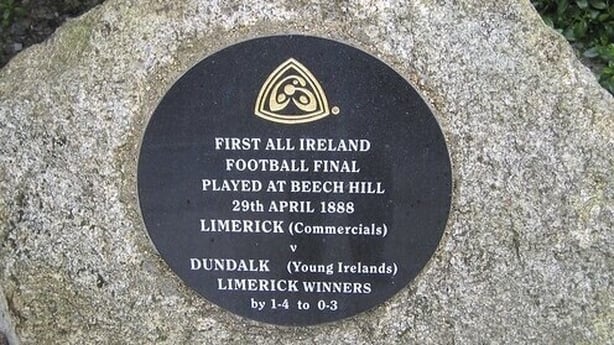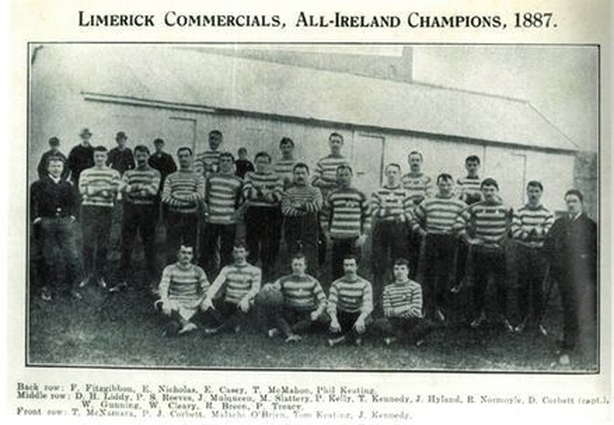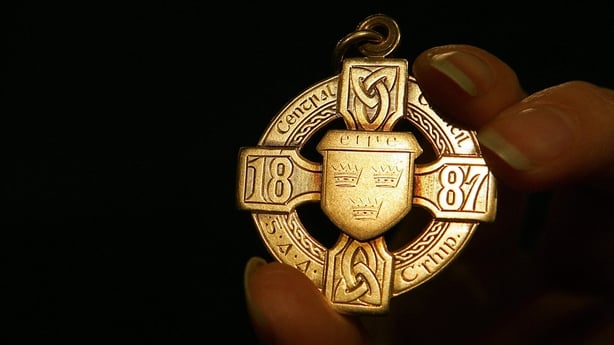Analysis: why did it take 25 years for inaugural All-Ireland football final winners Commercials of Limerick to get their medals?
All-Ireland championship medals are amongst the most desired possessions in Gaelic games. The story of the first All-Ireland football championship medals in 1887 is one marred by objections, delays and forgetfulness but, ultimately, it is a story that shows how their historical significance is recognised in a meaningful way today.
The first GAA championships took place in 1887, three years after the association was established. However, 1887 would prove to be a tumultuous year for the GAA with a split caused by the Irish Republican Brotherhood (IRB) attempting to infiltrate the GAA because a sporting organisation would be the ideal cover-up for their secret revolutionary activities. The split meant that the All-Ireland championship final was delayed until April 1888. Intercounty teams or provincial tournaments were not in existence yet so the county champions went onto the national series to represent their county.
We need your consent to load this rte-player contentWe use rte-player to manage extra content that can set cookies on your device and collect data about your activity. Please review their details and accept them to load the content.Manage Preferences
From RTÉ Archives, 1970 episode of Wednesday Report on the history and popularity of Gaelic games
The road to the final
Young Irelands from Dundalk represented Louth and were to play Commercials of Limerick in the 1887 final. Commercials' road to the final was a rocky one. They beat Dowdstown from Co. Meath well in the first round and drew with Kilmacow of Kilkenny in the second round. The replay was at Bansha in Co. Tipperary, where Commercials had a 'lucky win’ according to the Waterford News and Star.
They went on to play Templemore in the semi-final at Limerick Junction, where Templemore won on a scoreline of 0-9 to 0-3. Commercials lodged an immediate objection and the referee ‘refused to declare the winners until he had the opportunity of laying before the Central Council certain things that came under his notice during the progress of the match’, reported the Dundalk Democrat.
According to the Irish Examiner, it transpired that the umpire from Templemore ‘willfully obstructed players in the Commercial team and assisted his own team with the result’. Central Council came to the decision that the game was to be replayed and Commercials were the eventual winners. Meanwhile, their All-Ireland final opponents from Co. Louth received a bye.

Not so up for the match
The excited anticipation of the first All-Ireland final, something we are so accustomed to nowadays, did not take hold at all. Commenting on the football championship, a report in the Irish Examiner in March 1888 stated that ‘it would be desirable to finish this quickly’. The fixture itself was decided at such short notice that even the Young Irelands team were only made aware of it two days in advance through a notice in a newspaper.
The match was played at Clonskeagh, Co Dublin and was not without controversy. On an occasion when Young Irelands were certain to score, ‘one of the Limerick men threw his arms around the neck of the Young Irelands player running with the ball’. The impartiality of the match officials also came into question by the Dundalk Democrat as the referee was deemed to ‘enthusiastically cheer’ when Commercials scored a goal.
The match finished with a bugle sound and an announcement of the score: Commercials 1-04 Young Irelands 0-3. Young Irelands lodged an objection on the grounds that one of the Commercials players had played with the Dublin Kickhams club previously, but it was overruled by Central Council and the referee’s decision was upheld.

Where are the medals?
Today, champions are presented with the cup after the match and there is a tradition of medal presentations some time after the final, usually a couple of weeks or months. No cup was presented to the first All-Ireland football champions and Commercials demonstrated extreme patience by waiting 25 years to be presented with their All-Ireland medals. The wait was so long that several members of the winning team had died by the time the medal presentation had come around in 1912.
Archive newspaper sources indicate that the delay with the medals was due to financial difficulties within the GAA. But teams that won finals in the years after Commercials received their medals soon after they became champions. It would appear that the 1887 All-Ireland football champions got left behind and forgotten for some time.

The medal design
The 1887 medal itself was produced by A. Duffner, a silversmith in Tipperary town and features their hallmark. The inscription on the front reads ‘Central Council G.A.A. C’ship’. The reverse is inscribed ’First All Ireland F. Championship won by Lmck Commercials P.J. Corbett’. Patrick J. Corbett was described as ‘a great exponent of football’ and was also serving as secretary of the Commercials club when he won this coveted first All-Ireland championship medal.
The style of the medal is in what is now known as the traditional GAA Celtic Cross design, a design that still follows in championship medals and remains the ultimate symbol of victory for players. Rather than ‘Eire’ featuring across the centre as with the majority of All-Ireland medals, the 1887 medals have the engraved arms of Munster on a shield. Perhaps this indicates that the Munster Council commissioned the medals, rather than the GAA’s Central Council.
The wait was so long that several members of the winning team had died by the time the medal presentation happened in 1912
Historical significance
In December 1935, a letter from Commercials player Malachy O’Brien was published in the Limerick Leader. By then based in Connecticut, USA, O'Brien wrote to ask if his All-Ireland medal could be posted to his address across the Atlantic ocean. He wrote how he would treasure the medal as a ‘reminder of bygone days and those loyal, true and trusted comrades’. Before it even came into his possession, the player knew that the 1887 All-Ireland medal would become a cherished belonging.
The National Museum of Ireland acquired Patrick J. Corbett’s 1887 All-Ireland medal as part of the national collection, ensuring that it is cared for correctly and made accessible as a source of learning and enjoyment for audiences. In 2013, it was chosen by the Royal Irish Academy as one of the objects to be represented in A History of Ireland in 100 Objects. This project developed into a dedicated website, a hardback book by Fintan O'Toole and an educational programme. The medal even featured on a series of postage stamps, further demonstrating its historical significance.
The Limerick Commercials club is no longer in existence but it will be forever enshrined in GAA history. We await to see who will win this year's All-Ireland football championship medals, but we’ll always know who won the first ones.
Patrick J. Corbett’s medal will be on display in the GAA: People, Objects & Stories’exhibition in the National Museum of Ireland, Collins Barracks, Dublin from September 13th.
The views expressed here are those of the author and do not represent or reflect the views of RTÉ








